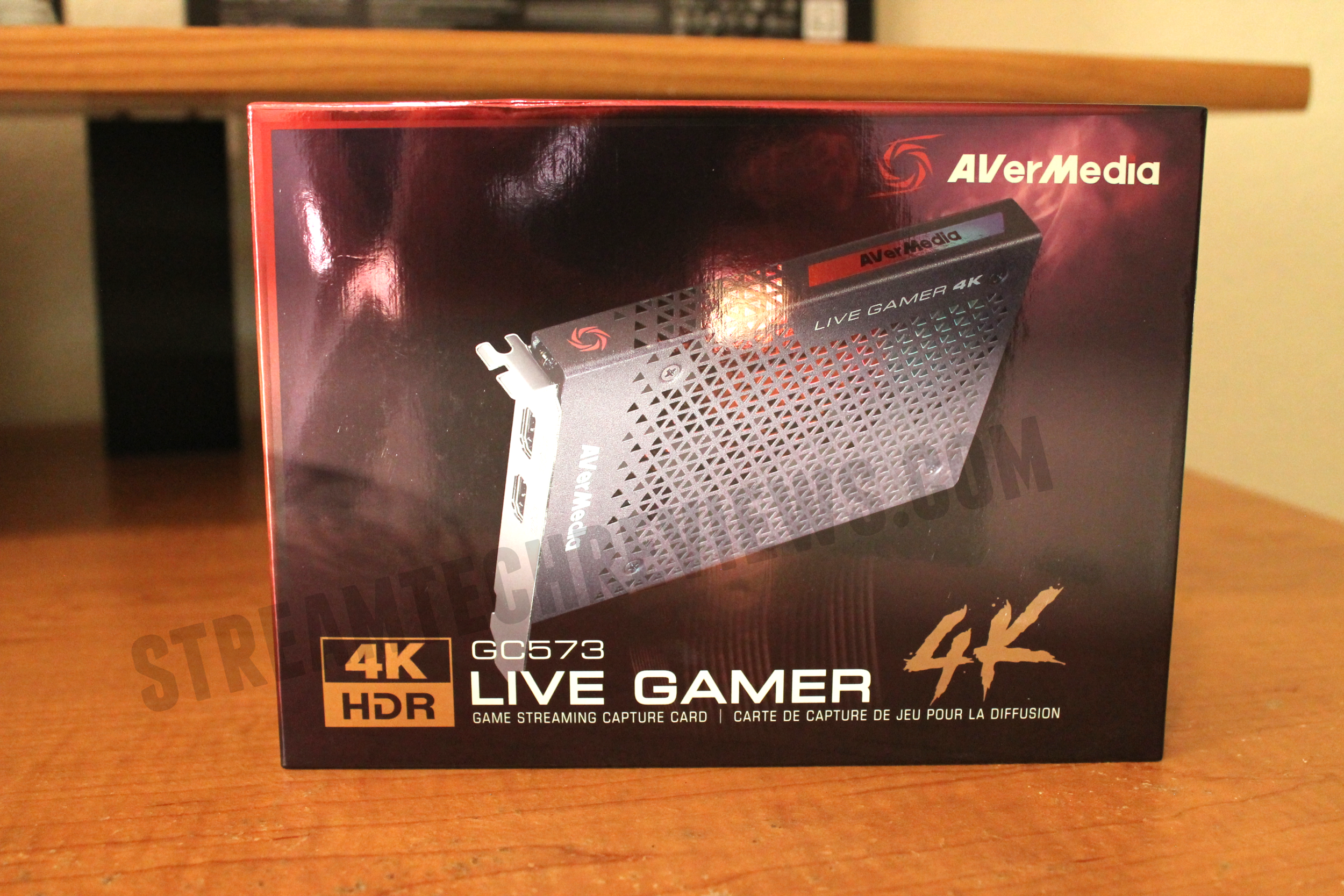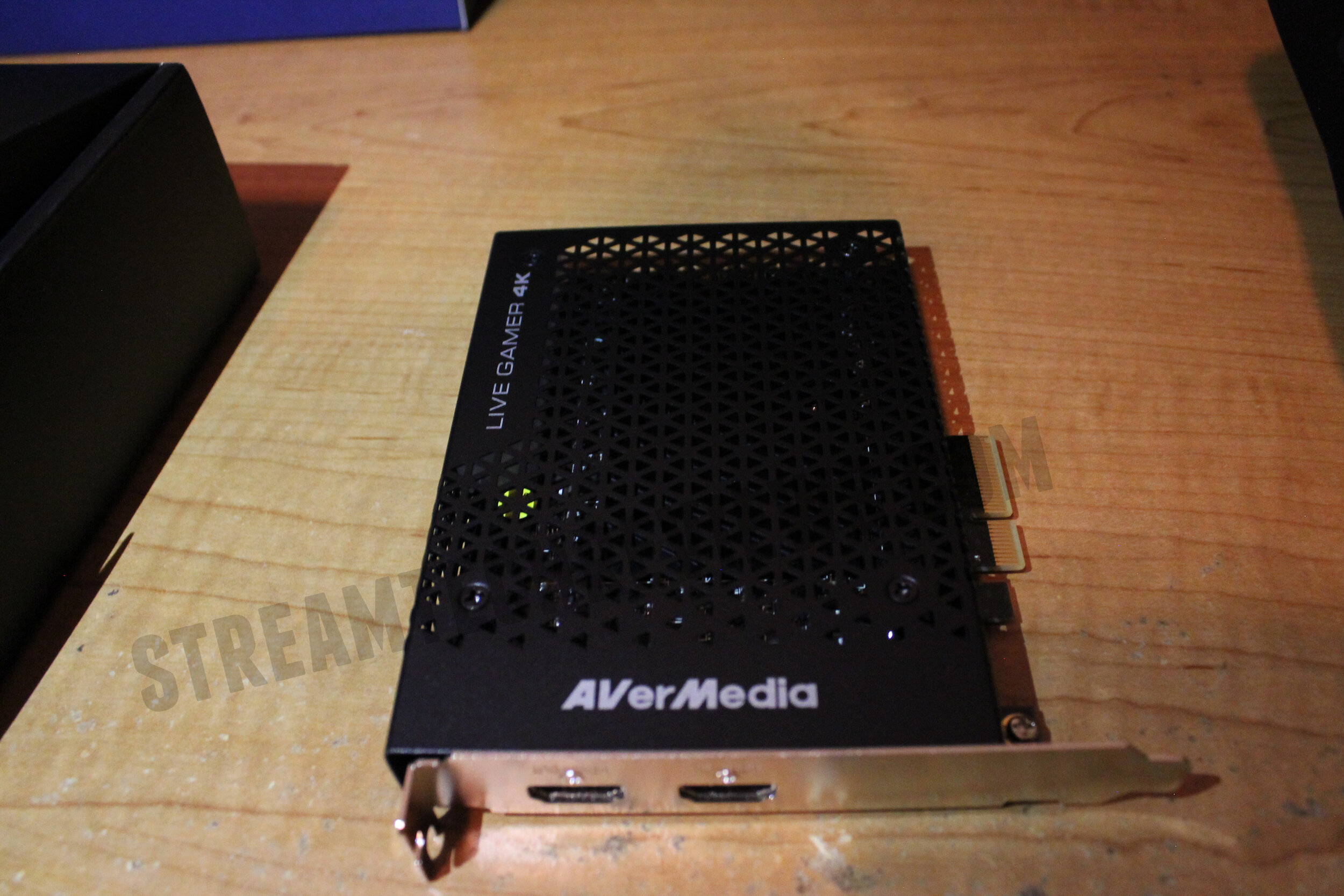AVerMedia Live Gamer 4K (GC 573) Review
This post contains Amazon affiliate links that support the website. As an Amazon associate I earn from qualifying purchases.
-Specifications
-Performance
-RGB Lighting Effects
-Verdict
Specifications
The AVerMedia Live Gamer 4K (GC 573) [Amazon Link] cost $250 at the time of my purchase. Here are its specs:
-internal capture card. Connects directly to a motherboard by a PCIe x4 slot.
-supports passthrough and capture 4K 60 FPS high-dynamic-range (HDR) footage.
-supports passthrough of HDR footage and recording in SDR for purposes like streaming with OBS.
-supports passthrough and capture of high frame rate footage, including 1440p 144 Hz, and 1080p 240 Hz.
-has an HDMI in and HDMI out port on the back. HDMI 2.0 is required for 4K 60 HDR.
On AverMedia’s website, they state that only NVIDIA GPUs 10 series or higher support HDR on this card. However, as an AMD Radeon RX 5700 user, I wanted to test this for myself. My results are below.
The GC 573 simply comes with an instruction booklet, a high speed HDMI 2.0 cable, and the capture card itself.
Performance
After installing the drivers on their website, the AVerMedia Live Gamer 4K showed up instantly in their RECentral capture software. Unlike other 4K capture cards I’ve used like the Elgato 4K60 S+ and the Elgato 4K60 Pro, there was very little delay between the time I saw the image from the PS4 Pro I was playing on and when I saw it on my PC’s monitor. Using a 60 FPS game (Tekken 7) as reference, it felt like 1-2 frames maximum of delay, and I was able to do lots of recording looking at only the computer monitor.
Here is some HDR Footage:
Some SDR Footage:
HDR gameplay but recorded in SDR:
The captures from this card were excellent in both the RECentral software and OBS. However, there are two obstacles I ran into. 1) Graphics card requirements 2) Bandwidth limitations.
The graphics card I used primarily was an AMD Radeon RX 5700. AVerMedia says you need an NVIDIA GTX 10 series or better GPU for the 4K 60 HDR to work. This is because of the NVENC encoder built onto those cards. I tried to use an RX 570 and it did not go well. The card was maxed out in usage, and the software would not let me select HDR at all. The 5700 worked very well and allowed me to record in H.265 without heavy CPU or GPU taxing. If you’re using AMD, then a 5700, 5700 XT or better is probably what you’ll need. This has just been my experience, and there are no guarantees with other cards.
The second obstacle affects both NVIDIA and AMD graphics cards. More specifically, it’s a bandwidth issue from the motherboard. Even though the card can supposedly function with a PCIe x4 slot, that’s not always the case. My motherboard is an MSI X570. When I had my RX 5700 in the x16 slot and the AVerMedia capture card in the x4 slot, I could not get 60 FPS with either RGB24 color space or P010 which is used for HDR. I was capped to about 55 FPS.
Could not get past 55 FPS with my original setup
Since I saw this issue in another review, I decided to investigate and experiment for myself. Ultimately, the solution I found was to swap the two cards. I put the graphics card in the x4 slot and the capture card in the x16 slot.
Graphics card in x16 slot
AVerMedia in the x16 and RX 5700 in the x4 slot. (don’t worry, I screwed it on after this pic)
This allowed me to achieve 4K60 FPS HDR. Even though I got this to work, I wasn’t happy that I had to put a supposedly x4 card in my x16 slot. Hopefully this serves as both a heads up for buyers and a solution to anyone else having the same problem.
Bandwidth test passed after swapping the AVerMedia to the x16 PCIe slot
60 FPS with P010 achieved!
RGB Lighting Effects
This card has 3 RGB lighting presets: Colorful breath, Hue Cycle, and Dreamy. These effects can be slowed down, sped up or turned off completely. They’re really cool, but more important are the status lights. The card blinks red when your PC is booting up, but also when there’s some sort of error. When I first installed it, I didn’t realize you needed to install the drivers on AVerMedia’s website. Once I did, the red error lights went away and it connected as it should.
Verdict
Other than PCIe bandwidth problem, the AVerMedia Live Gamer 4K GC 573 capture card is excellent, and I recommend it. There is very little latency, and the footage looks superb. My main disappointment now is that there aren’t yet enough 4K 60 FPS HDR console games for me to get the most out of this card. The future looks bright with next gen consoles on the way shortly!
AVerMedia Live Gamer 4K (GC 573): https://amzn.to/34t9Pz7









